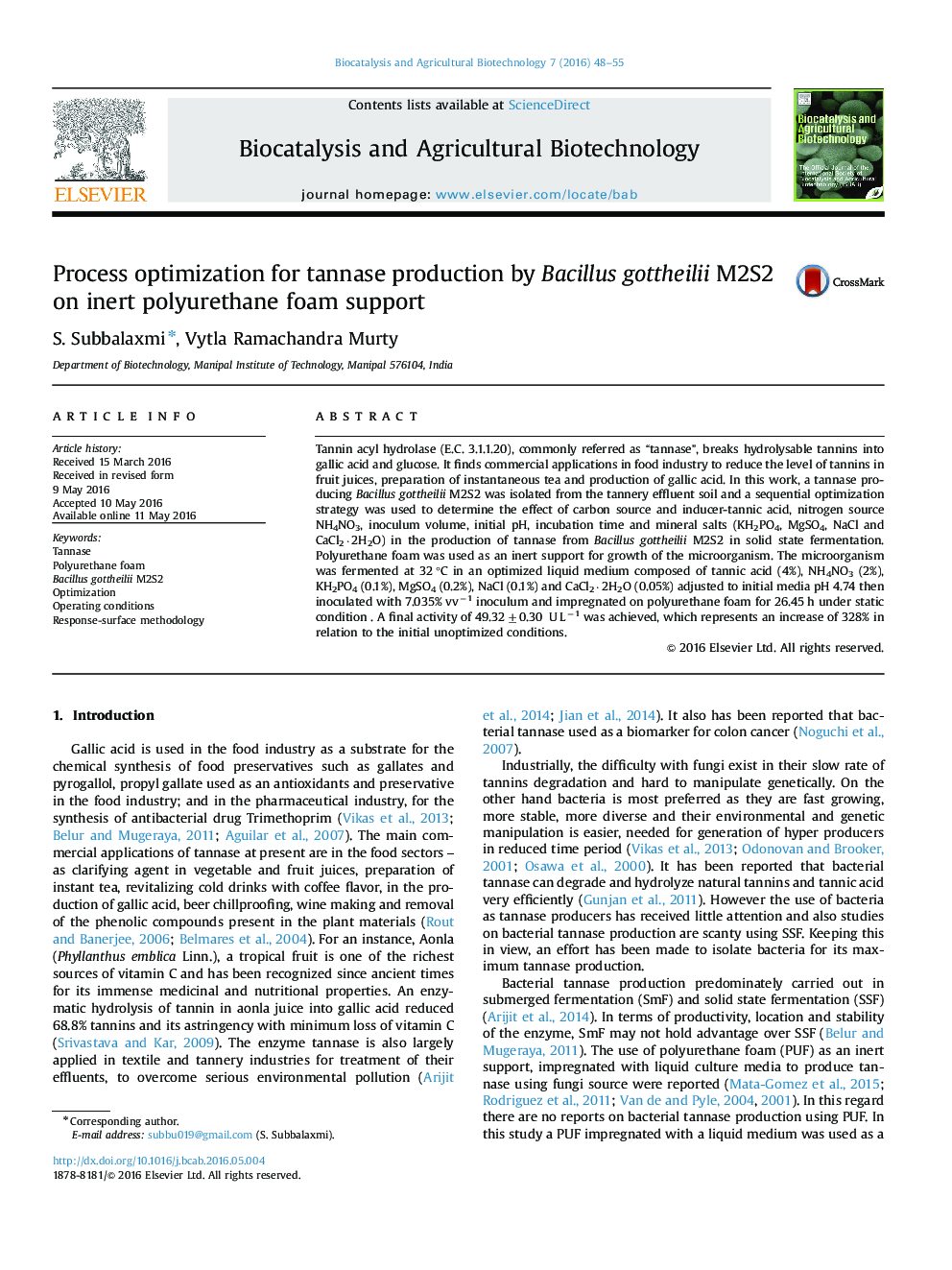| Article ID | Journal | Published Year | Pages | File Type |
|---|---|---|---|---|
| 2075633 | Biocatalysis and Agricultural Biotechnology | 2016 | 8 Pages |
Tannin acyl hydrolase (E.C. 3.1.1.20), commonly referred as “tannase”, breaks hydrolysable tannins into gallic acid and glucose. It finds commercial applications in food industry to reduce the level of tannins in fruit juices, preparation of instantaneous tea and production of gallic acid. In this work, a tannase producing Bacillus gottheilii M2S2 was isolated from the tannery effluent soil and a sequential optimization strategy was used to determine the effect of carbon source and inducer-tannic acid, nitrogen source NH4NO3, inoculum volume, initial pH, incubation time and mineral salts (KH2PO4, MgSO4, NaCl and CaCl2·2H2O) in the production of tannase from Bacillus gottheilii M2S2 in solid state fermentation. Polyurethane foam was used as an inert support for growth of the microorganism. The microorganism was fermented at 32 °C in an optimized liquid medium composed of tannic acid (4%), NH4NO3 (2%), KH2PO4 (0.1%), MgSO4 (0.2%), NaCl (0.1%) and CaCl2·2H2O (0.05%) adjusted to initial media pH 4.74 then inoculated with 7.035% vv−1 inoculum and impregnated on polyurethane foam for 26.45 h under static condition . A final activity of 49.32±0.30 U L−1 was achieved, which represents an increase of 328% in relation to the initial unoptimized conditions.
